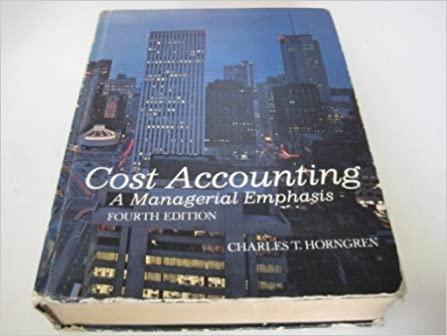



! Required information The Chapter 7 Form worksheet is to be used to create your own worksheet version of the Review Problem for Activity Based Costing found in the text (include a link of the problem). 2. Assume that Office Mart places orders more frequently, but everything else remains the same. On your worksheet increase the number of orders from 4 to 8. (Prior to completing this requirement, change all worksheet figures back to their original amounts.) A B C D E 1 Chapter 7: Applying Excel 2 3 Data 4 $ Manufacturing overhead Selling and administrative overhead 500,000 300,000 5 $ 6 7 Other Assembling Units 50% Processing Orders 35% Supporting Customers 5% 8 10% 9 Manufacturing overhead Selling and administrative overhead Total activity 10% 45% 25% 20% 10 1,000 250 100 11 units orders customers 12 13 Office Mart orders: 1 customer 8 orders 80 units 14 Customers 15 Orders 16 Number of filing cabinets ordered in total 17 Selling price 18 Direct materials 19 Direct labor $ 595 S 180 $ 50 (a) What is the customer margin under activity-based costing when the number of orders increases to 8? (Enter a loss as a negative amount.) Customer margin under activity-based costing (b) What is the product margin under the traditional costing system when the number of orders increases to 8? (Enter a loss as a negative amount.) Product margin under the traditional costing system (c) Which of the following statements are true? (You may select more than one answer. Single click the box with the question mark to produce a check mark for a correct answer and double click the box with the question mark to empty the box for a wrong answer. Any boxes left with a question mark will be automatically graded as incorrect.) ? If a customer orders more frequently, but orders the same total number of units over the course of a year, the customer margin under activity based costing will decrease. ? If a customer orders more frequently, but orders the same total number of units over the course of a year, the product margin under a traditional costing system will decrease. ? If a customer orders more frequently, but orders the same total number of units over the course of a year, the customer margin under activity based costing will be unaffected. |? If a customer orders more frequently, but orders the same total number of units over the course of a year, the product margin under a traditional costing system will be unaffected. 3. OfficeMart has found an error in its data. The percentage of selling and administrative overhead attributable to processing orders should be changed to 25% from 45% and the percentage attributable to supporting customers should be changed to 45% from 25%. . D E 1 Chapter 7: Applying Excel 2 3 Data 4 $ Manufacturing overhead Selling and administrative overhead 500,000 300,000 5 $ 6 7 Other Assembling Units 50% Processing Orders 35% Supporting Customers 5% 10% 8 Manufacturing overhead 9 Selling and administrative overhead 10 Total activity 10% 25% 45% 20% 1,000 250 100 11 units orders customers 12 13 OfficeMart orders: 14 Customers 1 customer 8 orders 80 units 15 Orders 16 Number of filing cabinets ordered in total 17 Selling price 18 Direct materials 19 Direct labor $ 595 $ 180 $ 50 (a) Based on new number of orders in Requirement 2, what is the customer margin under activity-based costing when the data are corrected? (Enter a loss as a negative amount.) Customer margin under activity-based costing (b) Based on new number of orders in Requirement 2, what is the product margin under the traditional costing system when the data are corrected? (Enter a loss as a negative amount.) Product margin under the traditional costing system (c) Which of the following statements are true about what happens when the percentage of selling and administrative overhead attributable to processing orders declines and the percentage of selling and administrative overhead attributable to supporting customers increases by the same amount? (You may select more than one answer. Single click the box with the question mark to produce a check mark for a correct answer and double click the box with the question mark to empty the box for a wrong answer. Any boxes left with a question mark will be automatically graded as incorrect.) ? When the percentage of selling and administrative overhead attributable to processing orders declines and the percentage of selling and administrative overhead attributable to supporting customers increases by the same amount, costs are shifted from the processing orders cost pool to the supporting customers cost pool. ? When the percentage of selling and administrative overhead attributable to processing orders declines and the percentage of selling and administrative overhead attributable to supporting customers increases by the same amount, costs will be shifted from customers who order more frequently to those who order less frequently. 1 When the percentage of selling and administrative overhead attributable to processing orders declines and the percentage of selling and administrative overhead attributable to supporting customers increases by the same amount, the customer margins of those who order more frequently will increase relative to the customer margins of those who order less frequently










